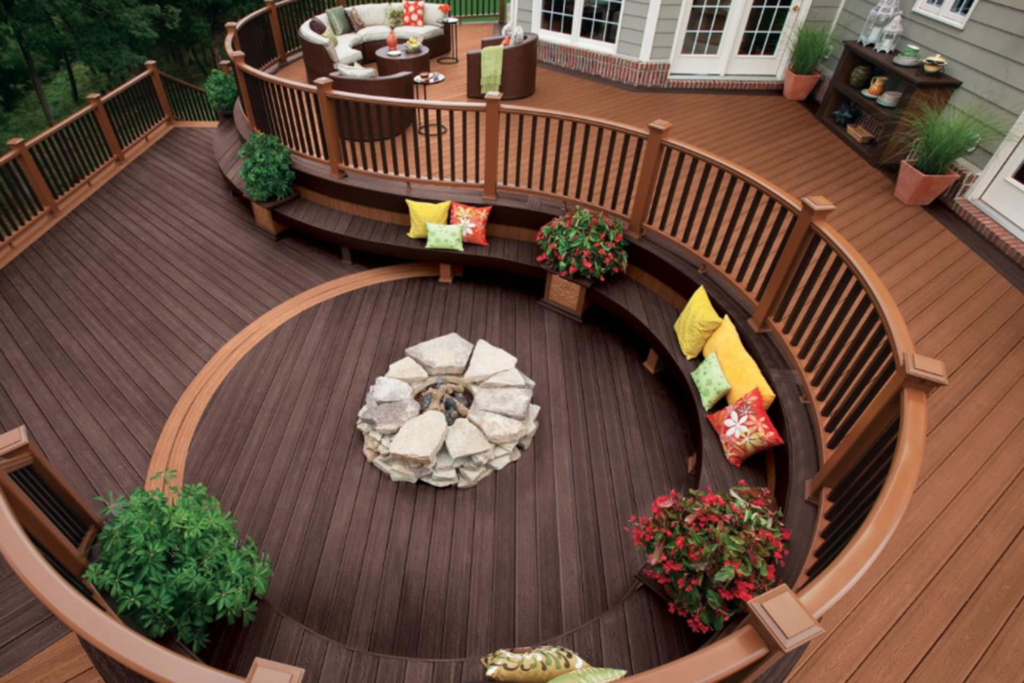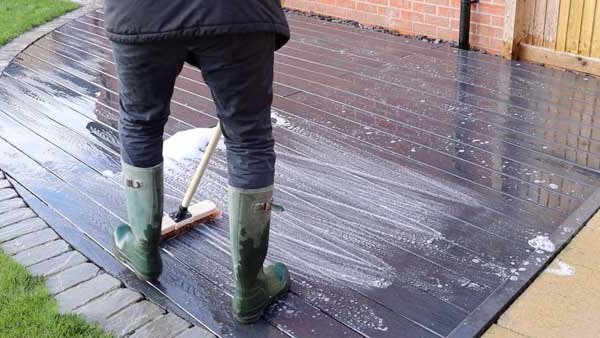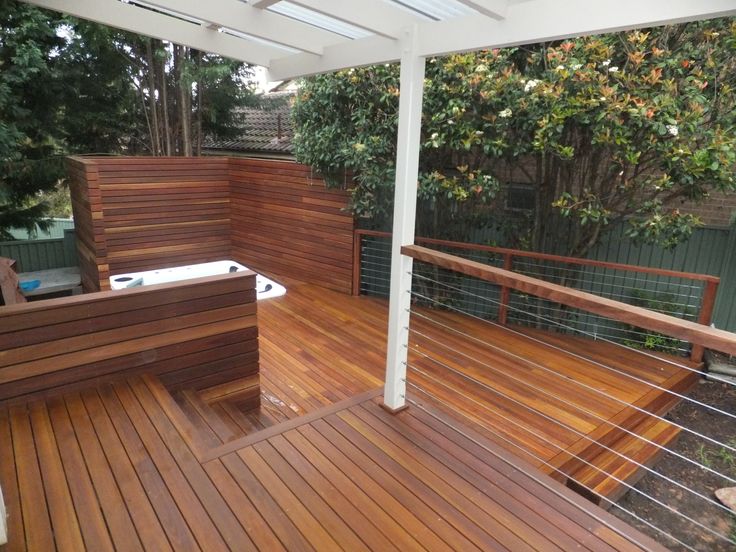
Wood Decking and Composite Wood Decking
Many different wood species are available for use as decking and railing. Common options at U.S. lumberyards include cedar, redwood and pressure-treated pine lumber. For homeowners interested in exotic wood species, tropical hardwood decking options include tiger wood, ipe (pronounced “EE-pay) and mahogany. While composite wood decking are invented in the late 1980s, composite wood decking is made of wood fibers encased in plastic. And it is readily available at big box home improvement stores like The Home Depot and Lowe’s, as well as local lumberyards throughout the U.S
Composite Decking or Wood? – The Pros & Cons
Pros of Composite Decking
- There’s less maintenance. Consumers must decide if the look and feel of natural wood is worth the work that goes into periodic staining, painting and replacing sections that have begun to decay. If you’d rather spend your time doing something else, composites are your choice.
- Composites come in a variety of colors. Unlike wood, composites don’t need to be painted or stained to match your home’s exterior.
- You can use recycled materials. Some composite companies are using recycled materials. This means your synthetic deck can be environmentally friendly.
- The technology is improving. Some manufacturers now produce decking with a hard plastic shell bonded to composite boards to improve durability. According to Popular Mechanics, this makes the surface less prone to staining, fading, scratching and mold

Cons of Composite Decking
- A pricey alternative to wood. Durability comes at a cost, as it is more expensive than wood. It could cost 15 to 20 percent more for composite material than pressure-treated pine.4
- Composites aren’t natural. No matter how much effort goes into making composites look like wood, they’re not. The only way to get the full beauty of a wood deck is to use the real thing.
- Composite decks aren’t completely maintenance free. Like wood decks, they still require you to sweep up leaves and other debris, and wash them down periodically.
- You’ll need to comparison shop. Because there are a variety of composite manufacturers, it’s important to compare prices and ask questions about durability. Many composites now come with stain and fade warranties, so be sure to check that the material you select has a warranty.
What is the Cost Difference?
The most common concern among homeowners trying to choose between composite decking or wood is cost. Among wood decking’s pros and cons, affordability is a decided benefit. Typically, this type is lower cost to purchase than composites, especially in the initial purchase. However, although the initial cost of wood is less, usually ends up paying for itself within 2-3 years when including the cost of annual maintenance. The price differential also depends on the wood species chosen versus the brand of composite decking, and local market conditions.
Easy to use online tools can also help you estimate the costs whether you use wood or composite wood decking.



